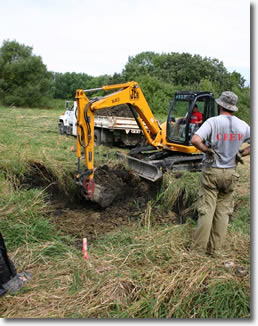#7 Wisconsin v. Texas A&M: Sat 9/21/24, 7 PM CT (BTN)
Sept 19, 2024 9:07:40 GMT -5
Wiswell, badgerbreath, and 6 more like this
Post by rainbowbadger on Sept 19, 2024 9:07:40 GMT -5
| Wisconsin vs. Texas A&M |
| Sat., Sept. 21, 2024 - 7 PM Central |
| UW Field House - Madison, Wisconsin |
Follow Along
🎟: Wisconsin Athletics Ticket Office
📺: B1G Network
📊: StatBroadcast
🎧: 100.5 FM ESPN Madison
The Teams
Players to Watch
Wisconsin
Texas A&M
History
The Series: Wisconsin leads 6-2.
In Madison: Wisconsin leads 4-0.
In College Station: Texas A&M leads 1-0.
Neutral: Wisconsin leads 2-1.
The Streak: Wisconsin has won the last 3. A&M's last win was in 2003.
Last Meeting: December, 2019 - Wisconsin swept during the NCAA Regionals in Madison.
Did you know…?
Players to Watch
Wisconsin
 |  |  |  |  |
| #13 - OH Sarah Franklin 6-4 GR | #14 - MB/RS Anna Smrek 6-9 SR | #10 - MB/RS Devyn Robinson 6-2 GR | #9 - MB Caroline Crawford 6-3 GR | #24 - S Charlie Fuerbringer 5-11 FR |
Texas A&M
 |  |  |  |  |
| #9 - OPP Logan Lednicky 6-3 JR | #1 - MB Ifenna Cos-Okpalla 6-2 JR | #4 - OH Emily Hellmuth 6-3 JR | #16 - S Maddie Waak 5-10 JR | #12 - L Ava Underwood 5-7 JR |
History
The Series: Wisconsin leads 6-2.
In Madison: Wisconsin leads 4-0.
In College Station: Texas A&M leads 1-0.
Neutral: Wisconsin leads 2-1.
The Streak: Wisconsin has won the last 3. A&M's last win was in 2003.
Last Meeting: December, 2019 - Wisconsin swept during the NCAA Regionals in Madison.
Did you know…?
Texas A&M's Center for the Study of the First Americans is an institute dedicated to understanding the beginnings of modern human existence in North, Central, and South America. We know that the first humans came to the Western Hemisphere around the end of the last Ice Age, but we are missing key details about these people, from whom all Indigenous Americans descend. Exactly who were the First Americans, where did they come from, when did they get here, and by what routes? What sorts of environments and climates did they encounter, and how did they expand and adapt to the Western Hemisphere’s varied environment? Together with their students, the Center's 23 faculty members, working across the fields of prehistoric and nautical archaeology and biological and socio-cultural anthropology, are dedicated to answering these questions.

Researchers from the TAMUCSFA excavated around Mud Lake, looking for additional evidence of early human habitation.
The Center conducts field work across both American continents, including one site here in Wisconsin, where they studied the origins of the Mud Lake Mammoth. The first bones were found during a ditch drainage project in Kenosha County in the 1930s, with additional discoveries in the area through the 1990s. Stone tools found at the site, along with the way the bones were stacked and scattered, provides convincing evidence of human involvement. The remains at the Mud Lake site consisted of 21 bones: radius, ulna (front leg) and several foot bones that demonstrating numerous long, parallel marks consistent with butchering. The large number of cuts observed on the ulna & radius suggest that they were used as a cutting board. The bones were dated to 14,500 years before present (YBP), thus making the Mud Lake Mammoth the oldest butchered mammoth site in North America.

The Heibor Mammoth, AKA the Mud Lake Mammoth, is now on exhibit at the Milwaukee Public Museum.
Researchers from the Center came to Wisconsin in 2004-5, where they conducted an extensive hand-coring operation to define the stratigraphy of four target areas where the mammoth bones could have originally come from, based on historical accounts. While they failed to find additional mammoth bones in the area, radiocarbon dates on wood obtained from the trenches confirms that these were, in fact, the sites that the mammoth bones would have come from.





